Copyright 1982 by Norman Perrin and Dennis During.This article, with very minor modifications, was written by Dennis Duling, Professor Emeritus of Canisius College. It was published in the 2nd edition of Norman Perrin and Dennis Duling, The New Testament: An Introduction (Harcourt Brace Jovanovich,1982), pp. 4-35, now out of print. This excellent work, revised, expanded, and continually improved, is now published by Wadsworth and is in its 4th edition with Duling as the sole author. I highly recommend this fine NT Introduction to my readers and have used it for many years since Norman Perrin, with whom we both studied at the University of Chicago, published the first edition in 1974 . It is used here with permission and is not to be reposted or reprinted in any form. 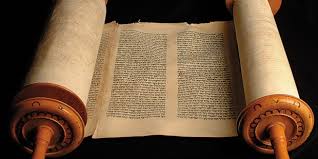
“Judaism” in the time of Jesus is more properly designated “Judaisms” as it can include a rich variety of forms and practices that flourished during late Second Temple times (200 B.C.E.-70 C.E.). In one way or the other this diverse “Jewish” culture traces itself back to the Hebrew Bible and the history of the ancient Israelites. By Roman times, with the northern Ten Tribes long ago carried away into Assyrian captivity and largely lost to history, it became customary to refer to all those of Hebrew or Israelite ancestry who lived in the Roman Mediterranean world as “Jews,” and to their religious-cultural life as “Judaism.”
A HISTORICAL SKETCH
The Hebrews settled the land of Canaan in the late second millennium B.C.E.. In about 1000 B.C.E. the monarchy of King David and his son King Solomon emerged. About 921 the united monarchy split. In 721 B.C.E. the northern kingdom (Israel) was crushed by the Assyrians. The population created by the exile and replacement of these peoples eventually came to be known as those whom the New Testament calls the Samaritans, who had a rival holy place: Mt. Gerizim. Later, the southern kingdom (Judah) was destroyed by the Babylonian Empire, which deported much of the Judean population (the Babylonian Exile) and in 587 destroyed Jerusalem and its holy Temple. Thus began the “dispersion” of Jews from the homeland (Greek Diaspora), a phenomenon that continued down to our own time.
The Babylonian Exile marked a major turning point in the history of the Jewish people. When Cyrus the Great of Persia conquered Babylon he permitted various native peoples, including the Jews, to return home. Beginning in 538 B.C.E., groups of exiles began to return to the Land in a series of waves, though many Jews elected to remain in Babylonia and it remained a center of Jewish life and thought for a thousand years. First they laid the Temple foundations. They also hoped for the reestablishment of the monarchy under Zerubbabel upon whom they pinned messianic hopes (cf. the prophets Haggai 2:23 and Zechariah 3:8; 6:12). About 515 B.C.E. a modest Temple was dedicated. Despite Samaritan opposition Nehemiah rebuilt the walls of Jerusalem (437 B.C.E.). Ezra, “a scribe skilled in the Law of Moses” (Ezra 7:6) came, bringing with him the sacred Law, or Torah, which included the sacred traditions that embodied the very life of the people. By now, the people no longer spoke its language, Hebrew, but a sister language, which had become the standardized international language of administration in the Persian Empire: Aramaic.
Nonetheless, Ezra promulgated the Torah and the people celebrated the festival of Succoth, acts which symbolized Jewish identity–in fact, some marriages with non-Jews were dissolved (Ezra 10:18-44). The book of Nehemiah stresses the necessity of following Torah, avoiding trade with non-Jews on the Sabbath, observing rules that the land was to lie fallow and that slaves were to be released every seventh year (the Sabbatical Year), and paying Temple taxes promptly. All this should not be interpreted to mean that Judaism had become simply an ingrown, protective, and national-chauvinistic religion legalistically seeking repentance in order to gain God’s favor. Archaeological evidence indicates that extensive contact with surrounding nations existed in this period; in fact, there were temples outside of Jerusalem. Indeed, Babylonian ideas of wisdom, astrology, and magic, as well as Persian views of resurrection of the dead and final judgment, made their way into Jewish thinking. Perhaps most important, this was a period of intense literary activity; this is the time much that of what later became Scripture in Judaism was collected, edited, and written. Yet, Judaism did evolve emphases on Torah and its interpretation. Gradually prophecy waned and the High Priests gained in political power and religious authority as interpreters of the sacred books. Ultimately, the Torah, centered in the Pentateuch (Five Books of Moses: Genesis, Exodus, Leviticus, Numbers, Deuteronomy), and its interpretation would rival and even surpass the Temple and the priesthood in authority . Judaism became a “religion of the book” and Torah and its interpretation were central to life and thought.
Then came Alexander and Hellenization. Archeological evidence indicates that the upperclasses in Palestine were probably already influenced by Greek culture in the third century B.C.E.. Indeed, Greek ways soon entered the city of Jerusalem, while Babylonian astronomical, meteorological, and calendrical speculations seem to have continued to influence the Jews. One gets the impression that Hellenization, had it proceeded at its own pace, might have continued a progressive and uninterrupted alteration of Jewish life and culture, at least in the urban areas. But this did not happen.
When the Seleucid Greeks finally overcame the Ptolemies in 198 B.C.E., Palestine came under Seleucid domination. Although the Jews welcomed the Seleucids, in 190 B.C.E. the Romans defeated the Seleucids (but allowed them to remain in office) and forced them to pay an enormous indemnity, which was passed on to their own subjected peoples, including the Jews. The fortunes of the Jews took a turn for the worse.
The Maccabean Revolt
In 175 B.C.E. Antiochus IV Epiphanes (“[god] manifest”) took the Seleucid throne. Antiochus was an eccentric despot who sought to enforce Hellenization throughout his empire. When Jason, a priest who was pro-Greek offered a huge sum of money for the High Priesthood and promised to turn Jerusalem into a Greek city, Antiochus accepted and Hellenization proceeded at a rapid pace. But Jason was soon out-bought by Menelaus, a rival for the post. Eventually civil war broke out among the various rival factions. Antiochus, disgruntled because of his setback in the war with Egypt, interpreted the civil strife in Jerusalem as a revolt against his Hellenizing efforts. He attacked Jerusalem, exterminated all males who resisted, and sold women and children into slavery. The city walls were torn down and the old citadel of the Temple was fortified as a Greek garrison (the Akra). Then Antiochus attempted to obliterate the Jewish religion by forbidding Temple sacrifices, traditional festivals, Sabbath worship, and the rite of circumcision (the sign of the covenant), upon pain of death. Torah scrolls were ordered destroyed, and every town in Judea was commanded to sacrifice to the Greek gods. An altar was erected over the altar of burnt offering in the Jerusalem Temple; sacrifices were offered to the Olympian high god, Zeus. This event was etched on the memory of the Jews as “the abomination of desolation” (1 Macc 1:54, 59; Dan 11:31; 12:11). This was no mere assimilation of Greek ways; it was a threat of the annihilation of traditional Judaism.
The response to these events was the Maccabean Revolt in 167 B.C.E.. When Antiochus’ emissary came to the little town of Modein and demanded that the people offer sacrifices, Mattathias, of priestly stock, refused. Seeing one of the Jews about to comply, he rushed forward and slew him at the altar and then killed the king’s emissary, “acting zealously for the law of God, as Phinehas had done” (cf. Num 25:6-15). Then he and his sons fled to the hills and were joined by many others. At his death, his son Judas Maccabeus took charge and waged a successful guerilla war against the Seleucids, retook Jerusalem, and in 164 restored and rededicated the Temple, giving birth to the Feast of Hanukkah (“Dedication”) or “Lights.” Thus began a long war which, despite great odds, ended in victory and the establishment of the Maccabean, or Hasmonean kingdom, an independent kingdom which lasted until 63 BCE.
In summary, the Greek period (333-63 B.C.E.) was marked by two trends: the Hellenization of Palestine, and the reaction of the Jews to forced Hellenization resulting in the Maccabean Revolt and the independent Hasmonean kingdom. From this history we can see several forces at work: the tendency of some to come to terms with Hellenization; the tendency of others to hold onto the traditional ways; and the willingness of still others to revolt because of “zealousness” for the Law when the traditions are severely attacked. Similar responses will occur in the first century CE. Moreover, in the period of the independent Hasmonean kingdom, three religious movements appear for the first time: the Sadducees, the Pharisees, and the Essenes. We shall discuss them further when we take up Jewish religion.

The Arrival of Rome in Palestine
In 63 B.C.E. the Roman general Pompey was invited to settle a dispute between two Maccabeans. He sided with Hyrcanus II and his supporters, one of whom was Antipater II, the ruler of Idumea. However, from this point forward, Palestine was considered to be controlled by Rome, and in the reorganization by Augustus it fell under the administration of the imperial province of Syria. Unlike senatorial provinces, imperial provinces were governed by a military governor called a “Legate” (who, in this case resided at Antioch), and Roman troops were stationed to keep order. There were also “districts” that were testy enough to be governed directly by the emperor through his “prefect” (later “procurator”). The chief responsibilities of the governors were civil order, the administration of justice (including the judicial right of life and death), and the collection of taxes. This last responsibility was often farmed out to local tax companies whose income was what they collected in excess, a system open to abuse. The Roman army–in the legions only Roman citizens, in the auxiliary units, local recruits–policed the system. The Romans were sensitive enough to permit the Jews some special privileges: exemptions from military service, from going to court on the Sabbath, from being required to portray the emperor’s head on their coins (hence, the need for money changers at the Temple), and from having to offer sacrifices to the emperor as a deity (this being replaced by sacrifices “for Caesar and the Roman nation” twice daily). Furthermore, the Romans were not to represent the image of the emperor on their military standards in areas of heavy Jewish population. Yet, it is also clear that these concessions were not always carried out in practice, and in Palestine there were a number of occasions when more restless elements in the population resisted Roman abuses and followed the tradition of “zealousness for the Law.”
In the meantime, the Idumean Antipater and especially one of his sons, Herod (“the Great”), were crafty enough to shift allegiances to a succession of Romans–Pompey, Julius Caesar, Cassius, Anthony, and finally Octavian–and by this means Herod emerged as a powerful puppet king (ethnarch) under the Romans (ruled 37-4 B.C.E.). Herod proved to be an extremely capable tyrant. To consolidate his power, he had numerous opponents and relatives executed, including his wife Miramme, thus eliminating the possibility of the return of the Hasmoneans. To win the favor of the emperor he became an ardent Hellenizer. He surrounded himself with Greek scholars and undertook many building projects, including a magnificent and fortified palace. He rebuilt the Temple in Jerusalem with a fortress on its corner (Antonia), and in other non-Jewish areas he built whole cities with the usual manifestations of Greek culture such as theaters, baths, and amphitheaters. Herod also built many military fortifications, the most famous of which was the fortress of Masada along the Dead Sea. In his final years, Herod was plagued by domestic problems. He died unloved and unmourned by both family and nation. Before he died, Jesus of Nazareth was born.

Herod’s final will, slightly modified by Augustus, divided his kingdom among his three sons. Philip (4 B.C.E. to 33 or 34 C.E.) was named “tetrarch” of the largely non-Jewish regions northeast of the Sea of Galilee. Herod Antipas (4 B.C.E. to 39 C.E.) became tetrarch of Galilee and Perea, an area across the Jordan River. Herod Antipas is the king of Galilee in the gospel stories (cf. Luke 13:31-33, “that fox”) and is remembered for the execution of John the Baptist (cf. Mark 6:17-29) and for his contemptuous treatment of Jesus (Luke 23:6-12). During his long reign, which spans the life of Jesus, his magnificent capital city Sepphoris was rebuilt in splendor, located just 5 miles NW of the little village of Nazareth. Jesus, accordingly, grew up in the “suburb” of the major urban city of Galilee. The Roman emperor Caligula finally exiled Antipas. The third son, Archelaus, was given Samaria and Judea in the South. He was opposed by his subjects and by his brother, Herod Antipas. Also at this time there was unrest in Galilee caused by a certain Judas the Galilean so that there was soon total revolt in Judea. Archelaus went to Rome to appeal his position, while the Legate of Syria intervened with troops to restore peace. When he returned Archelaus treated his subjects so brutally that he was eventually summoned back to Rome, dismissed, and banished to Gaul in 6 C.E.. Except for the short period of the reign of Herod Agrippa I over all of Palestine from 41-44 C.E., Samaria and Judea fell under the authority of procurators appointed directly from Rome, as did most of the land after 44 C.E.. Thus, during the adult life of Jesus, Galilee was ruled by Herod Antipas and Judea-Samaria by the procurator Pontius Pilate (26-36 C.E.).
Life for the Jews under the procurators was exceedingly difficult. For example, Pontius Pilate was described by Agrippa I as unbending and severe with the stubborn, and was accused of bribery, cruelty, and countless murders. This protrait is confirmed by the Jewish historian Josephus who chronicled a number of events that provoked the Jews under Pilate and other procurators, leading to riots, beatings, and executions. The Legate of Syria eventually removed Pilate on the complaints of the Samaritans, whom he had mistreated. After the interim reign of Herod Agrippa I ended in 44 C.E., the situation under the procurators deteriorated even further. In one case, Josephus (who likes to inflate figures) says 20,000 Jews were killed in a riot prompted when a Roman soldier ridiculed some Passover pilgrims with an indecent gesture. There thus emerged within Judaism groups of revolutionaries who looked back to the militaristic Maccabees and their zeal for the Law as great heroes. These “Zealots” were already active in spirit, if not in name, in the period prior to the birth of Jesus. In 6 or 7 C.E., Judas the Galilean and a Pharisee named Zaddok attempted to arouse the people to revolt against the first Roman census. Self-styled prophets and messiahs appeared from time to time and eventually an even more radical group, the Sicarii (Latin sicarius, “dagger”), emerged to foment revolution by assassination. Clearly, the policy of the tyrannical and brutal procurators, like that of the Seleucid Hellenizer Antiochus IV over 150 years earlier, met with increasing opposition led by more revolutionary Jews; ultimately, the forces of moderation could not contain them.
The Jewish Revolts
The last of the procurators, Gessius Florus (64-66 C.E.), was probably the worst. In the spring of 66 C.E., he robbed the Temple treasury of a great sum of money. The outraged populace mocked him by taking up a collection. Florus took revenge by allowing his troops to plunder part of the city of Jerusalem. Attempts at mediation by the priests failed, and when departing troops did not respond to friendly overtures of the Jewish crowds, the people began slinging insults at Florus. Slaughter ensued. But in a bloody street battle, the people eventually gained the upper hand, took possession of the Temple mount, and cut off the passage between the Temple and the Roman-held fortress of Antonia. Further attempts at mediation by Agrippa II, leading Pharisees, and the priestly aristocracy could not quell the revolt. Rebels retook the fortress of Masada, taken earlier by the Romans, and, at the direction of the son of the High Priest, Eleazar, the sacrifices in behalf of the emperor were stopped. This was, in effect, a declaration of war.
An initial success in routing the army of the Legate of Syria encouraged the rebels and the land was organized for battle. The emperor Nero (54-68 C.E.) dispatched his experienced commander Vespasian, who organized the legions at Antioch and sent his son, Titus, to Alexandria to bring up the fifteenth legion. The newly organized army contained a formidable force of 60,000 troops. Galilee, organized for the Jews by the future historian Josephus, offered only moderate resistance, causing the radicals to believe–with some justification–that the leadership was not fully dedicated. The Zealots under the leadership of John of Gischala sought to replace them with more dedicated patriots, while the Christians fled to Pella across the Jordan. Now Jerusalem found herself in a bloody civil war between the moderate and radical forces. The experienced Vespasian subdued the surrounding areas, deciding to let the Jews exhaust themselves. Then, in 68 C.E., news came of Nero’s suicide and Vespasian again delayed. In quick succession, Galba, Otho, and the western commander, Vitellius, became emperor. But the East was not to be denied; Vespasian was also acclaimed emperor and after the assassination of Vitellius, Vespasian left for Rome to assume his role, leaving his son Titus to complete the war.
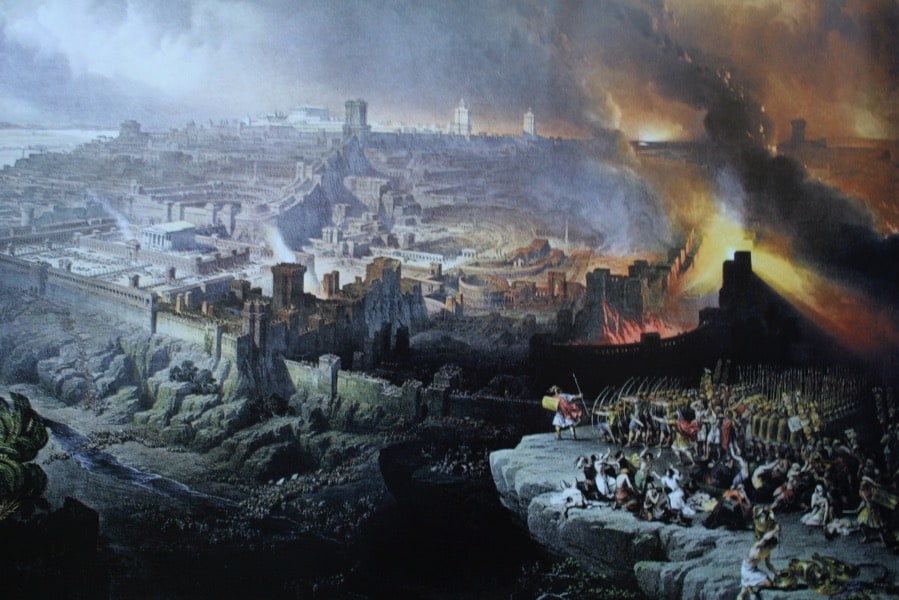
When in the spring of 70 C.E. Titus began the siege of Jerusalem, the Jewish factions of the city united against a common enemy. Though they fought valiantly, Titus built a wall around the city making it impossible for the Jews to get provisions. Hunger and thirst began to take their toll. Gradually the various walled divisions of the city fell, one by one, and the fortress of Antonia was retaken. Titus attempted to save the Temple, but in the heat of battle it was ravaged by fire. The Jews refused to surrender. Women, children, and the elderly, all were butchered, and the city and most of its walls destroyed. The major battle over, Titus set sail for Rome with 700 handsome prisoners for the victory parade through Rome, commemorated by the arch of Titus, still to be seen in the Roman Forum.
The victory belonged to the Romans. Several fortresses still remained to be subdued, however. The most difficult was the mesa along the Dead Sea fortified by Herod the Great, the fortress of Masada. Commanded by the descendant of Judas the Galilean, Eleazar son of Yair, it was almost impenetrable. The task fell to Flavius Silva who, because of the steepness of the cliffs, built a tremendous wall of earth as a bridge across which the huge battering ram could be rolled into place. When Eleazar saw that the Jewish cause was hopeless, he addressed the garrison; he asked that they kill their families, and then each other. It was done. The Romans finally breached the wall, but there was no battle left to be fought.
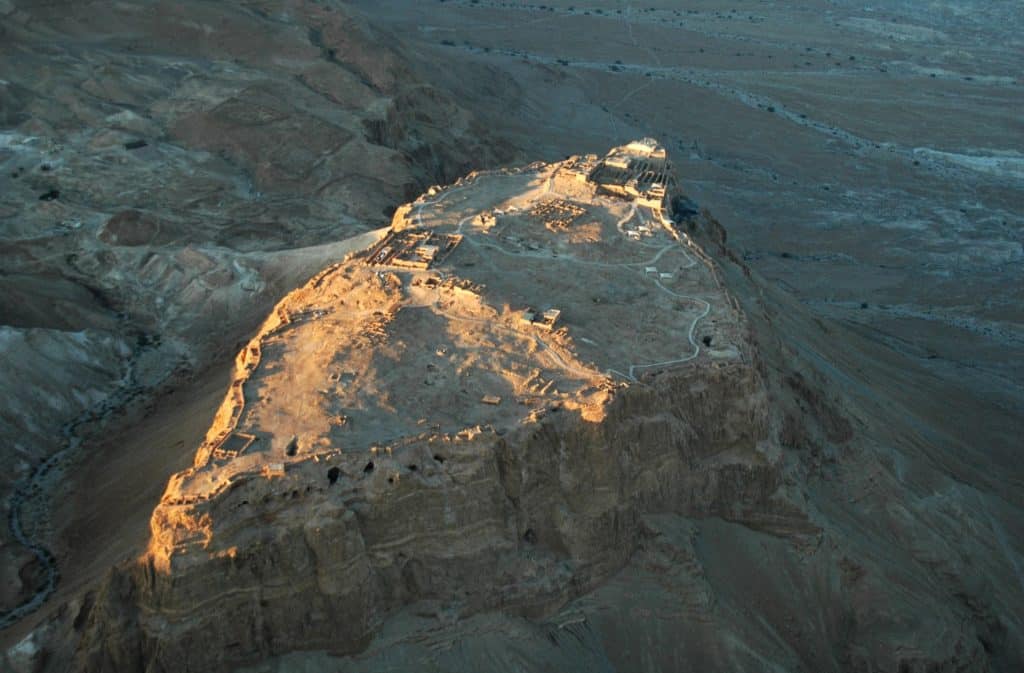
With Jerusalem and the Temple destroyed, the heart of Judaism was pierced. What survived was a totally reorganized Judaism under the Pharisees who met at the coastal town of Jamnia, and those Jewish communities of the Diaspora. To be sure, Palestinian Judaism still flickered–enough that another revolt in Judea broke out in 132 C.E., probably in response to the emperor Hadrian’s empirewide ban on circumcision (not exclusively a Jewish practice), his attempt to establish a Greco-Roman city (Aelia Capitolina) where the Jewish holy city had stood, and his intention to build a temple to Jupiter Capitolinus on the site of the previous Jerusalem Temple. The leader of the revolt, bar Kosiba, called bar Kochba (“Son of the Star,” a messianic title, cf. Num 24:17) by his supporters, but bar Koziba (“Son of the Lie” = “Liar”) by his detractors, also failed. Hadrian’s plans were carried out; Jews living in Jerusalem were driven out and not permitted to return upon punishment by death. From that time on, Judaism became primarily Diaspora Judaism, a Judaism without a homeland, until the establishment of the state of Israel in 1948.
THE RELIGION OF JUDAISM
As Judaism emerged from the Babylonian conquest and exile, it inherited the stress of Israelite religion on monotheism: “Hear, O Israel, the Lord our God, the Lord is one . . .” (Deut 6:4). God’s name, Yahweh, had become too holy to pronounce, being substituted with Adonai (“lord”). According to Genesis 15 and 17, God had made an agreement, or covenant, with Abraham that the land of Canaan would be given to Abraham and his descendants. A sign, circumcision of every male child, had sealed this agreement. The covenant meant that the Jews believed themselves to be the special people of God, his elect or chosen people, with a mission to become “a light to the nations.” As the writers of the historical traditions of Israel expressed it, God had created the world, had delivered his people from bondage in Egypt, and had given them the land of Canaan. God also made other covenants, that is, agreements about the Law and the monarchy, one with Moses and another with David. God had revealed himself and his plan for his people; but if the king or the people disobeyed the covenant, they were subject to God’s just punishment.
Temple and Priesthood
The first Temple was built by David’s son, Solomon, in the tenth century B.C.E. and destroyed by the Babylonians in 587 B.C.E.. A modest Temple was rebuilt by the returning exiles in 515 B.C.E. and further reconstructed on a grand scale in the Roman-Herodian period. This reconstruction was begun by Herod the Great in 20 B.C.E. and was not completed until about 60 C.E., only to be destroyed a decade later. In the Persian period, the priests gained power due to the absence of an actual king and the decline of prophecy; in fact, the High Priest, as leader of the cultus and interpreter of religious traditions became the most powerful figure in Judaism. Under the Seleucid Greeks, the High Priesthood became something of a political position; then the Maccabees (who were also of priestly descent, though of an undistinguished line) assumed control of the High Priesthood and eventually assumed royal perogatives as well, thus succumbing to the politicization of the office. Hence, other priestly parties made their appearance, among them the Essenes and the Sadducees. Under the Herodians and procurators, High Priests were of varying families, and they were appointed to the post; nonetheless, they maintained a measure of political power, for they continued to preside over the central cultus at the Temple and over the religious Sanhedrin, Judaism’s highest court. The destruction of Jerusalem and the Temple in 70 C.E. meant the end of their power.

Apart from the political functions of the priests, their major religious functions consisted of the maintenance of purity by the sacrificial system at the Temple. In Judaism, sin was not only a moral question; it also concerned the practice of ritual and notions of the sacred and profane, purity and impurity–distinctions that are often lost to the modern consciousness. In ancient Israel a whole system of sacrifices had arisen to atone for sin, that is, to set sinful humankind right with the one, holy God. The priests administered the system and sacrifices were offered at least twice a day. Even the architectural plans of the successive temples reflect the various degrees of holiness. For example, only the outermost area of the Herodian Temple was accessible to Gentiles; beyond it they could not go “under penalty of death.” Moving toward the center in the Sacred Enclosure (for Jews) was the Court of Women, the Court of Israel (men), the Court of Priests, and the Holy Place–the forecourt where the sacrifices took place, and finally the Holy of Holies into which the High Priest entered only once a year, on the Day of Atonement. Thus the Temple was the holy center of the holy city in a holy land. Yet, like all oriental temples, it was also the hub of much economic and commercial activity, for it housed the national treasury. Every Jew was expected to pay the annual Temple tax.
Synagogue and Prayer
Sacrifice was an enacted prayer, that is, a means of human communication with God. There were also other forms of liturgical prayer; for example, the whole tradition of chants and psalms which in New Testament times had become the special province of a class of Temple priests, the Levites. This form of public prayer was continued even where there was no access to the Jerusalem Temple. When the synagogue (from the Greek for “gathering together”) developed sometime in the post-exilic period (the earliest archeological evidence is from the first century C.E.), it served as a “house of prayer” as well as a gathering place for meetings, meditation, and instruction. No sacrifice was offered there. Rather, the synagogue services probably consisted of a recitation of the Shema (“Hear, O Israel, the Lord our God, the Lord is one . . .”), Scripture, sermon, blessing, and, of course, prayer. Prayer0s could be offered at any time and any place; yet, they should be oriented toward Jerusalem–specifically the Holy of Holies–and it was customary to offer them three special times a day, namely, morning, midday, and evening. Standing or kneeling with hands raised to heaven were the usual positions.
The Centrality of Torah
In the post-exilic period, Judaism sought God’s will more and more in sacred tradition and the written word and its interpretation became the very basis of life. Torah meant “instruction”: in its widest sense any form of revelation; in a somewhat narrower sense, Scripture and its written and (especially) oral interpretation; and in a still narrower sense the Pentateuch (Five Books of Moses)–most specifically the legal materials in the Pentateuch. It was therefore “law” but included narrative materials as well. For a summary of its main elements see the document on this Web page: Summary of the Torah.
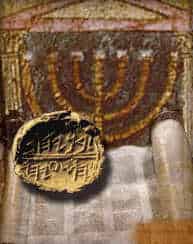
Apocalyptic Eschatology
The term eschatology is from the Greek terms eschaton, “the end,” and ho logos, “the word,” “the teaching.” It means therefore, “teaching concerning the end of things”–specifically, teaching concerning the end of the world. A particular form of eschatology is called “apocalyptic” (from the Greekapocalypsis, “an uncovering,” “a revelation,”); it describes both a movement and a literature that characteristically claimed that God had revealed to a writer the secrets of the imminent end of the world and so had given him a message for his people. As with Wisdom, the literature dates after 200 B.C.E. and is largely non-Biblical (that is, outside the Old Testament). It reveals a very diversified Judaism prior to 70 C.E., one marked by a number of movements which, if measured by the Judaism that survived the wars, appears in many respects non-normative or unusual. Much of that literature is the literature of apocalyptic eschatology.
There is no absolute agreement about what constitutes apocalyptic eschatology either with respect to its origins or content. It shows influences of Old Testament prophecy and Wisdom literature; but there are also currents of Persian dualism and Babylonian astrology. It is a child of hope and despair: hope in the invincible power of God, the world he created, and his plan and purpose for his people, but despair over the present course of human history in that world. The primary tenent of Jewish faith was that one true God was the creator and the ruler of all within it. At the same time, the actual experience of the people of God in the world was catastrophic: Assyrian and Babylonian conquest, exile in foreign lands, Persian domination, the coming of the Greeks, and finally the Romans. The burdens of war, occupation, forced Hellenization, and taxation by imperialistic powers produced an intolerable experience of alienation and powerlessness. Human history was a virtual descent into hell. But God was the ruler of all things and, therefore, he must have foreordained the tragic events of human history. Thus, there was some divine plan through which the horrors of history would reach a climax and everything would change. The hope was that the world would become much the same as it had been in the beginning of time: a paradise in which God’s elect people would be vindicated. This change would be marked by tremendous historical and cosmic catastrophes. In the meantime the people of God had to prepare themselves for the change and watch for the signs of its coming.
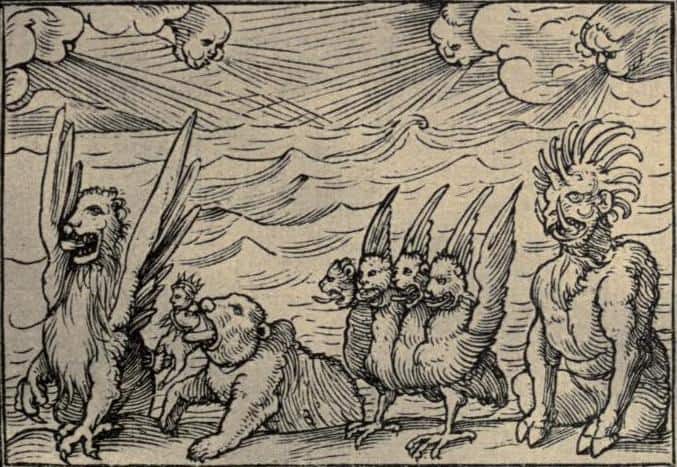
The most apocalyptic book in the Old Testament is the book of Daniel, which contains the Son of Man vision in 7:13-14, highly influential in the gospels:
I saw in the night visions,
and behold, with the clouds of heaven
there came one like a son of man,
and he came to the Ancient of Days
and was presented before him.
And to him was given dominion
and glory and kingdom,
that all peoples, nations, and languages
should serve him;
his dominion is an everlasting dominion,
which shall not pass away,
and his kingdom one
that shall not be destroyed.There are many other forms of the apocalyptic hope. The Assumption of Moses, a work contemporary with the New Testament, is particularly interesting because of its use of “Kingdom of God,” a key concept in the teaching of Jesus. Another form of this hope is associated with the Coming of a Son of David found in the first century B.C.E. document called the Psalms of Solomon. Despite the variety of the forms of expression, the hope for a climactic series of events that will lead to the final, eschatological intervention of God into human history, directly or through intermediary figures is constant. Through these events the world would be forever changed, transformed into a perfect world in which the people of God would be forever blessed for their fidelity, and their enemies and God’s forever punished.
This hope is called the “apocalyptic” hope because the characteristic claim of the literature that expresses it is that God has uncovered or revealed to the writer or seer his plan for the further course of history and the coming of the End. This revelation frequently takes the form of dreams or visions, which are then interpreted by a heavenly figure. The dreams or visions generally use symbols to recount the history of the Jewish (or Christian) people and to express the hope for the immediate future. So, for example, Daniel 7 tells in symbols the history of the Near Eastern world from the Babylonian Empire through the Persian Empire to the conquests of Alexander the Great and his ten successors as kings of the Macedonian Seleucid Kingdom of Syria. The final symbol used to represent a king is the “little horn” (Dan 7:8), which represents Antiochus IV Epiphanes, who began persecuting the Jews in 167 B.C.E. in an attempt to consolidate his empire. The result was the Jewish revolt. The author of Daniel 7 is living at the time of this Maccabean revolt, writing to inspire his people with confidence that the war is the beginning of the End, that it will shortly be ended by the coming of the Son of Man as judge and ruler of the world.
The book of Daniel is pseudonymous, that is, it was written under an assumed name long after the time of most of the events it pretends to prophesy. This is characteristic of Jewish apocalyptic writings, and usually a name of some importance–Abraham, Moses, David, or the like–would be chosen. This feature, of course, lent the writing a certain authority and there was no modern notion of fraud or copyright. The history would be portrayed in symbolic form leading up to the symbolic vision of the seer. The seer also dreamed and thought in traditional symbolic images, and frequently he alluded to previously written texts that contained them.
These are the most important characteristics of apocalyptic eschatology: a sense of alienation and of despair about history that bred the belief that the world was rushing to a foreordained tragic climax, a hope in God that fostered the conviction that he would act in the climactic moment to change things utterly and forever, and a conviction that it would be possible to recognize the signs of the coming of that climactic moment. Its chief literary characteristics were pseudonymity, symbolism, and quotation from previously existing texts.
Associated with some apocalyptic eschatological texts is the hope for a future redeemer, a Messiah. Originally the term “Messiah” (Hebrew mashiach; GreekChristos) meant “anointed;” in the Old Testament it was applied to any figure that was installed into office by anointing, that is, prophets, priests, and kings. Any of these figures was an “anointed one” or messiah. In the eschatological materials, there are several types of expectation. We have just noted a future redeemer and judge, the Son of Man. Other Jews hoped for a descendant of David to come, overthrow the enemies, and reestablish the Davidic kingdom. In the Dead Sea Scrolls, there is evidence for a triple expectation: a prophet like Moses, a royal Messiah of the line of David (“the Messiah of Israel”), and a priestly Messiah (“the Messiah of Aaron”). The following passage combines this with adherence to the Torah:
And they shall not depart from any maxim of the Law
to walk in all the stubbornness of their heart.
And they shall be governed by the first ordinances
in which the members of the Community began their instruction,
until the coming of the Prophet and the Anointed (Ones) of Aaron and Israel.The Community Rule 9:9-11
Jewish Movements and Groups in Palestine
The major radical political movement in Palestine, the Zealot movement, has been discussed; it cut across many party lines and included within its ranks priests, Pharisees, and common folk. Besides the Zealots, there were three major groups which are first mentioned in the texts of the second century B.C.E.: Sadducees, Pharisees, and Essenes. References to the first two appear frequently in the New Testament. We shall also note some more esoteric movements and figures.
The Sadducees, whose name seems to be derived from the High Priest Zadok of Solomon’s time, were a group largely composed of priests of the Zadokite line. They are first mentioned in connection with the non-Zadokite priest and Maccabee, John Hyrcanus I (134-104 B.C.E.). Because the Temple was destroyed (70 C.E.), priestly groups and, apparently, their literatures, disappeared. Knowledge of the Sadducees comes therefore through secondary references to them in ancient Jewish and Christian writings. From all indications, the Sadducees were members of influential Jerusalem families, and therefore of the “upper classes.” Historically, they had come into conflict with the Pharisees and thus were opposed to them for political and religious reasons. As priests, they sacrificed at the Jerusalem Temple, dominated the Sanhedrin and, as political leaders, attempted to maintain cordial relations with their Roman overlords. This conservative political stance was paralleled by a conservatism in religion. They held to a more literal reading of the Torah, which for them was the Pentateuch, and did not accept the oral tradition, which was the special perogative of the Pharisees. They also rejected those views which were most developed in the non-Pentateuchal, post-exilic Scriptures, namely angels, demons, and the resurrection of the dead (Acts 23:8; Mark 12:18-27). Correspondingly, they were strict in matters they believed were based in the Torah, for example, Sabbath laws. When the war with Rome became imminent, they attempted to mediate, but to no avail.
The name Pharisee is probably derived from the Hebrew perushim or the Aramaic perishaya, which means “the separated (ones),” though it is debated as to from what or whom they were separated. Like the Sadducees, they first made their appearance in the late second century B.C.E. under the Maccabees whom they initially supported, but from whom they later separated. After John Hyrcanus took bloody revenge on them for a Pharisee’s criticism of his mother, they once again came into their own under Queen Alexandra (76-69 B.C.E.) and gradually gained in stature. Unlike the Sadducees, most Pharisees were not priests, but lay scholars whose main influence was in their development and preservation of the oral legal tradition mentioned above. Thus, they were rooted in the synagogue and known for pious living (alms, tithing, prayer, and fasting) and interpretation of the Torah, especially in areas such as food purity, crops, Sabbaths and festivals, and family affairs. In these areas, the Pharisees “made a hedge for the Torah.” In direct contrast to the Sadducees, they accepted the larger notion of Scripture, as well as newer views such as angels, demons, and the resurrection of the dead. In the New Testament, Jesus is pictured as frequently in debate with the “scribes and the Pharisees,” the former having perhaps formed still another, separate group. The Pharisees were divided into various “schools,” the best known being those of Hillel and Shammai in the first century. Their most renowned teachers became rabbis, though the beginning of the use of this term is also debated. Unlike the Sadducees, then, many of the Pharisaic traditions have been preserved in the so-called rabbinic literature, for it was the Pharisees who survived the war with Rome and reorganized Judaism along Pharisaic lines at the coastal town of Javneh (Jamnia). Here the books of the Jewish Scriptures were decided, the oral traditions collected, and the prayer against the Christians (Nazarenes) and Heretics added to the important set of Jewish prayers, the Eighteen Benedictions. Henceforth, the heart of Judaism was the Torah, the synagogue, and the interpretation of Torah by the rabbis.
The Essenes, who are not mentioned in the rabbinic literature or the New Testament, are described by the ancient writers Philo, Josephus, and Pliny the Elder. They first appear under the Maccabean High Priest Jonathan (161-143/2 B.C.E.) and subsequently disappear during the wars with Rome, about 68 C.E.. Though some Essenes lived in the towns and cities, the discovery of the Dead Sea Scrolls in 1947 and the subsequent excavation of nearby Khirbet Qumran (the ruins of a Jewish “monastery” along the Dead Sea near the Wadi Qumran) have convinced most modern scholars that most of the scrolls were composed and copied by the Essenes, and that Pliny is correct when he says that an Essene community lived there, apparently in the caves in the cliffs. The name “Essene” (Greek Essenoi, Essaioi = possibly from Hebrew ossim meaning “the Doers” of the Torah) or perhaps the Aramaic ‘asayyah, “healers”) reflects possible origins among the Hasidim, the “Pious Ones” who temporarily joined the Maccabees in the Revolt of 167 B.C.E.. In any case, the founder of the community was a certain Teacher of Righteousness; a Zadokite priest who opposed one of the Maccabean priests as “the wicked priest” in the second half of the second century. In fulfillment of this passage which early Christians said prophesied John the Baptist (Isa 40:3: “… in the wilderness prepare the way of the Lord…”), the Teacher took his followers to the Dead Sea and established a priest-directed, scribal, and apocalyptic community which interpreted the prophecies to refer to themselves. There they worked, copied religious texts, wrote religious literature, worshipped according to their own calendar and customs, baptized, had a common meal, and sought to live pure and undefiled quasi-ascetic lives. Their literature, community organization, and eschatological orientation have become extremely important for understanding the rise of early Christianity.
Magic and Miracles
We have seen that in the Greco-Roman world at large there was an abundance of magicians and miracle workers, healers and physicians. Palestine was no exception, though some circles were very cautious because of the belief that God, not a powerful human being, was the ultimate source of healing. Nonetheless, the Babylonian and Persian beliefs about angels and demons which influenced the apocalyptic literary tradition also influenced popular religious views about the origins of sickness and disease. One widespread view about the origin of evil was based on the interpretation of Genesis 6:1-4, namely, that the “sons of God” (interpreted as angels) lusted after the “daughters of men” (human women) and produced a race of giants (interpreted as demons). In a reinterpretation of a Genesis story in the Dead Sea Scrolls, Abraham is said to have exorcized a demon from Pharaoh by prayer, the laying on of hands, and rebuking the evil spirit (GenApoc 20:16-19). David was said to have done the same thing by playing his harp (LibAntBib 60:1-3) and Noah by medicines and herbs (Jubilees 10:10-14). Solomon was especially remembered for his wisdom–here we note the influence of the Wisdom tradition–and that wisdom included his vast knowledge of magic and medicine. Josephus tells the story of the Jewish exorcist Eleazar who performed the following exorcism:
He put to the nose of the possessed man a ring which had under its seal one of the roots prescribed by Solomon, and then, as the man smelled it, drew out the demon through his nostrils, and, when the man at once fell down, adjured the demon never to come back into him, speaking Solomon’s name and reciting the incantations which he had composed.
Antiquities 5:2, 5
In Josephus and the rabbinic literature, Honi the Circle Drawer was remembered for bringing rain by prayer, and the Galilean Hasid (“Pious One”) named Hanina ben Dosa is remembered for healing by prayer. When the son of Yohanan ben Zakkai became ill, Yohanan said,
“Hanina, my son, pray for him that he may live.” He put his head between his knees and prayed; and he lived.
Babylonian Talmud, Berakoth 34b
In the stories of the Talmud, the tendency to ascribe the actual healing to God himself is clear, that is, the cure is effected through prayer; nonetheless, it is also clear that particular Holy Men were famous for the ability to heal. Such a man, also, was Jesus of Nazareth.
The Jewish Diaspora
We have highlighted some of the major movements, groups, and individuals of Palestinian Judaism: Zealots, Sadducees, Pharisees, Essenes, magicians and miracle workers. There were others. But most of the people were the common people, the ordinary people, whom the rabbis called “the People of the Land.” These people are difficult to identify with precision, except that the rabbis considered them with some disdain, presumably because they would or could not keep the Law with precision.
The focus of our sketch of the history and religion of Judaism has been on Palestine, though it is clear that Hellenism had a profound impact on Palestinian Judaism. But many Jews no longer lived in Palestine; many had stayed in Babylonia, and others were found scattered throughout the cities of the eastern Mediterranean, the largest and most famous being Alexandria where the Jewish community almost formed a state within a state. During the Greek period, Diaspora Jews learned to speak Greek, as did urban Palestinian Jews, and the need arose for Greek translations of the Scriptures. Though there are many problems with recovering the earliest Greek (Old Greek) text and tracing its history in relation to Hebrew and Aramaic texts, both tradition (the Letter of Aristeas) and recovered manuscripts, especially from the Dead Sea Scrolls, indicate that translations were already being made in the second century B.C.E., that is, prior to the time when the leaders at Jamnia had settled on the precise books of the Bible (Old Testament). The Greek translations (and subsequent translations and revisions) became the holy texts for Diaspora Jews, Greek-speaking Jews in Palestine, and Greek-speaking Christians. Based on the legend of their translation in Alexandria (Aristeas), which stated that 70 (or 72) Greek-speaking priests (from Jerusalem!) translated the Scriptures independently and arrived at precisely the same translations, the Greek version (including a few other books) is still called the Septuagint (LXX). The use of Greek-language Scriptures is an important factor not only in the Hellenizationof the Jews, but in the very understanding of the Jewish religion.
Jews had a special status in the Greco-Roman world; as we have seen, they were exempt from emperor worship and were permitted a number of special privileges based on their observance of the Sabbath and the festivals: exemption from military service, going to court on the Sabbath, and certain business arrangements. They were also permitted to settle inter-Jewish legal disputes according to their Law and tradition, and to administer their own funds and send money to Jerusalem, especially the Temple tax. It is a debated question whether Jews also had civic rights as citizens of the empire, that is, participation in public life, election of magistrates, and the like. Josephus says they did; other sources during the Roman period indicate they did not, which seems more likely. In their relations with Gentiles, Jewish practices such as the rite of circumcision and ritual purity laws tended to keep them distinct, and their special privileges under the Romans brought them some ill will. No doubt many Jews of the Diaspora became less inclined to follow the Law as strictly as they did in Palestine, especially since much of it dealt with the Temple. On the other hand, Judaism bore witness to a high sense of morality and attracted formal converts or proselytes (especially among women, who were not circumcised), as well as sympathetic adherents to the God of Israel and the basic universal morality of the Torah. These were called “God-fearers” and we have evidence that in every synagogue, especially in the Diaspora, there were groups of “Gentiles” or non-Jewish followers who were attracted to Judaism, but not to formal and full conversion.
Copyright 1982 by Norman Perrin and Dennis During.This article, with very minor modifications, was written by Dennis Duling, Professor Emeritus of Canisius College. It was published in the 2nd edition of Norman Perrin and Dennis Duling, The New Testament: An Introduction (Harcourt Brace Jovanovich,1982), pp. 4-35, now out of print. This excellent work, revised, expanded, and continually improved, is now published by Wadsworth and is in its 4th edition with Duling as the sole author. I highly recommend this fine NT Introduction to my readers and have used it for many years since Norman Perrin, with whom we both studied at the University of Chicago, published the first edition in 1974 . It is used here with permission and is not to be reposted or reprinted in any form.

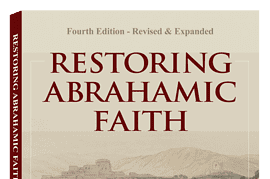
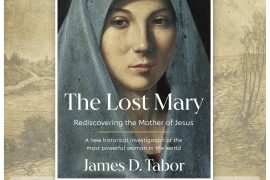
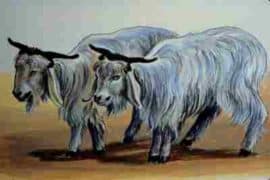


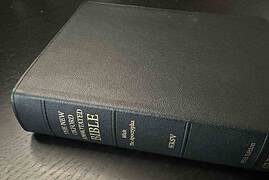
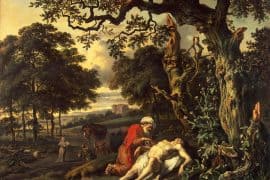
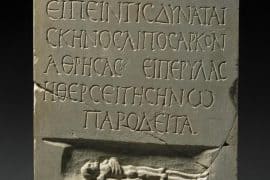
Comments are closed.